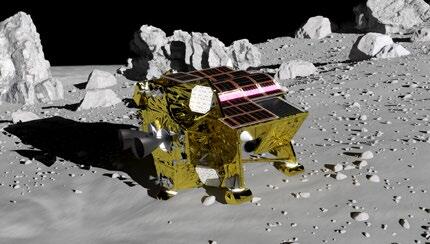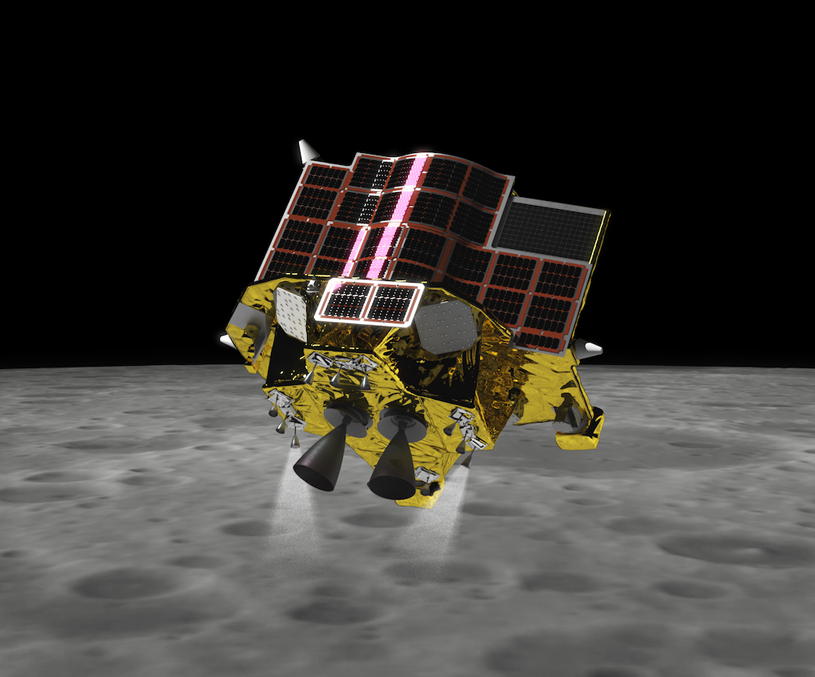Japan gearing up to launch small moon lander next month
SLIM is scheduled to lift off on Aug. 25.

The Japanese Aerospace Exploration Agency (JAXA) is gearing up to send the Smart Lander for Investigating Moon, or SLIM, mission to the moon on an H-2A rocket on Aug. 26 Japan time (0034 GMT, 9:34 a.m. JST, or 8:34 p.m. EDT on Aug. 25).
SLIM is, as its acronym suggests, a small-scale moon mission, but it has bigger ambitions in mind. The main aim of the lander — which is 7.9 feet (2.4 meters) high, 8.8 feet (2.7 m) wide and 5.6 feet (1.7 m) deep — is to demonstrate accurate lunar landing techniques, which will help make more challenging landing areas more accessible.
SLIM will aim to touch down within 328 feet (100 m) of its target point. This is crucial, as the mission is targeting a landing within Shioli Crater, a relatively fresh, 984-foot-wide (300 m) impact feature within Mare Nectaris, at 13 degrees south latitude and 25 degrees east longitude on the near side of the moon.
Related: Private Japanese moon lander crashed after being confused by a crater
The site was chosen using observational data from Japan’s SELENE (Kaguya) orbiter, which launched in 2007 and was slammed into the moon in 2009.
JAXA says that precision landings will become vital in the future. As humanity’s knowledge of the solar system grows, accessing specific, highly interesting sites will be all the more necessary to advancing our understanding.
The mission is also a test that JAXA hopes will help speed up exploration of the solar system through the use of lighter exploration systems. SLIM architecture could make landing on the moon and planets more economical, save weight (which can instead be used for science payloads) and even lead to small, targeted sample return missions.
Get the Space.com Newsletter
Breaking space news, the latest updates on rocket launches, skywatching events and more!

SLIM will weigh 1,300 pounds (590 kilograms) at launch, with roughly two-thirds of this mass being fuel. The spacecraft is equipped with a landing radar for its descent onto the lunar surface and will use image matching navigation and obstacle detection. The impact of landing will be absorbed using a crushable aluminum foam base.
Once on the moon, it will employ a multiband camera for assessing the local mineralogical environment, with particular interest in olivine, which may have originated in the moon’s mantle. SLIM also carries a small laser retroreflector array.
Also joining the lunar ride will be the X-ray Imaging and Spectroscopy Mission, or XRISM, a JAXA-NASA collaborative mission that also involves participation from the European Space Agency.
SLIM will be JAXA’s first lunar landing attempt. A private Japanese moon lander, Hakuto-R, reached lunar orbit earlier this year but crashed during its landing attempt.
Join our Space Forums to keep talking space on the latest missions, night sky and more! And if you have a news tip, correction or comment, let us know at: community@space.com.

Andrew is a freelance space journalist with a focus on reporting on China's rapidly growing space sector. He began writing for Space.com in 2019 and writes for SpaceNews, IEEE Spectrum, National Geographic, Sky & Telescope, New Scientist and others. Andrew first caught the space bug when, as a youngster, he saw Voyager images of other worlds in our solar system for the first time. Away from space, Andrew enjoys trail running in the forests of Finland. You can follow him on Twitter @AJ_FI.









